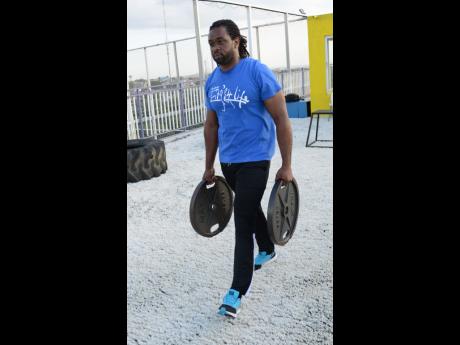Fit 4 Life | Putting it all together: Organising your training [Part III]
The game plan in hand, it's time to plan your workouts and exercises. Workouts must be properly organised to derive maximum benefit from each training session.
There are many areas to cover when planning workouts within the framework of your game plan. Generally, the focus of the plan will shift from an overall improvement to more specific training. This means workout sessions will have to change over time to deliver the intended results.
A strength building session, for example, will require the use of heavy weights and low reps, whereas one aimed at improving anaerobic capacity will use less weight and more repetitions.
SET UP YOUR WORKOUT
Exercise selection and sets are among the most important considerations when planning a workout. They are also intrinsically linked; exercise selection will influence volume - the number of sets, reps, and even the amounts of weight used.
The 'set principle' requires the organisation of exercises into groups of repetitions called sets. In a set, you perform a specific exercise a number of times/repetitions.
Sets share a close relationship with the intensity of exercises: higher intensity - for example, heavier weights means you can perform fewer reps in a set, while higher reps demand lower intensity. There are many set arrangements that can be used to develop different aspects of fitness.
MULTIPLE SETS
Multiple sets yield better response than doing a single set. A 2010 study published in the Journal of Strength and Conditioning concluded that multiple sets stimulate up to 40 per cent more hypertrophy, regardless of training experience.
SUPERSETS
A superset involves performing two sets back-to-back without rest for opposite muscle groups. Supersets save time, increase intensity, and boost energy expenditure.
COMPOUND AND TRI-SETS
Compound sets are two back-to-back sets for the same muscle. A tri-set goes one better and is three sets without rest for the same muscle/group. Compound and tri-sets have similar effects to supersets, but the main reason for applying them is to get full muscular development by hitting the same muscle group from different angles.
GIANT SET
Giant sets are an all-out attack on the muscles, where four or more sets are done without rest. Giant sets increase strength, strength endurance, and muscle growth.
STAGGERED SETS
Staggering small muscles group exercises between sets for large groups is a common practice which saves time and boosts calories burned.
REST-PAUSE SETS
Rest-pause sets are a tough workout method designed to increase intensity and time under tension. In rest-pause, a set is extended and broken into sections.
An example of rest-pause set for bench press follows:
- Eight reps
- 15 seconds rest
- Three reps
- 15 seconds rest
- Two reps
The idea behind rest-pause is to allow a small amount of time for recovery within the set in order to get more repetitions in each set. Because of the stress placed on the nervous system, rest-pause training should be limited. Once a week is the recommended max.
- Marvin Gordon is a fitness coach; email: marvin.gordon@physiqueandfunction.com; yourhealth@gleanerjm.com

